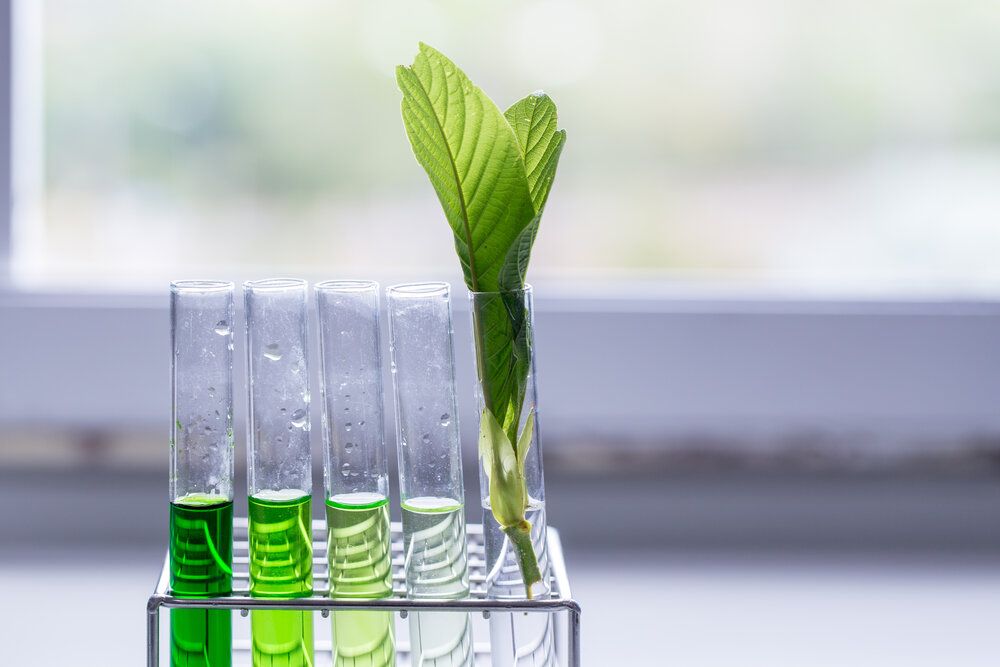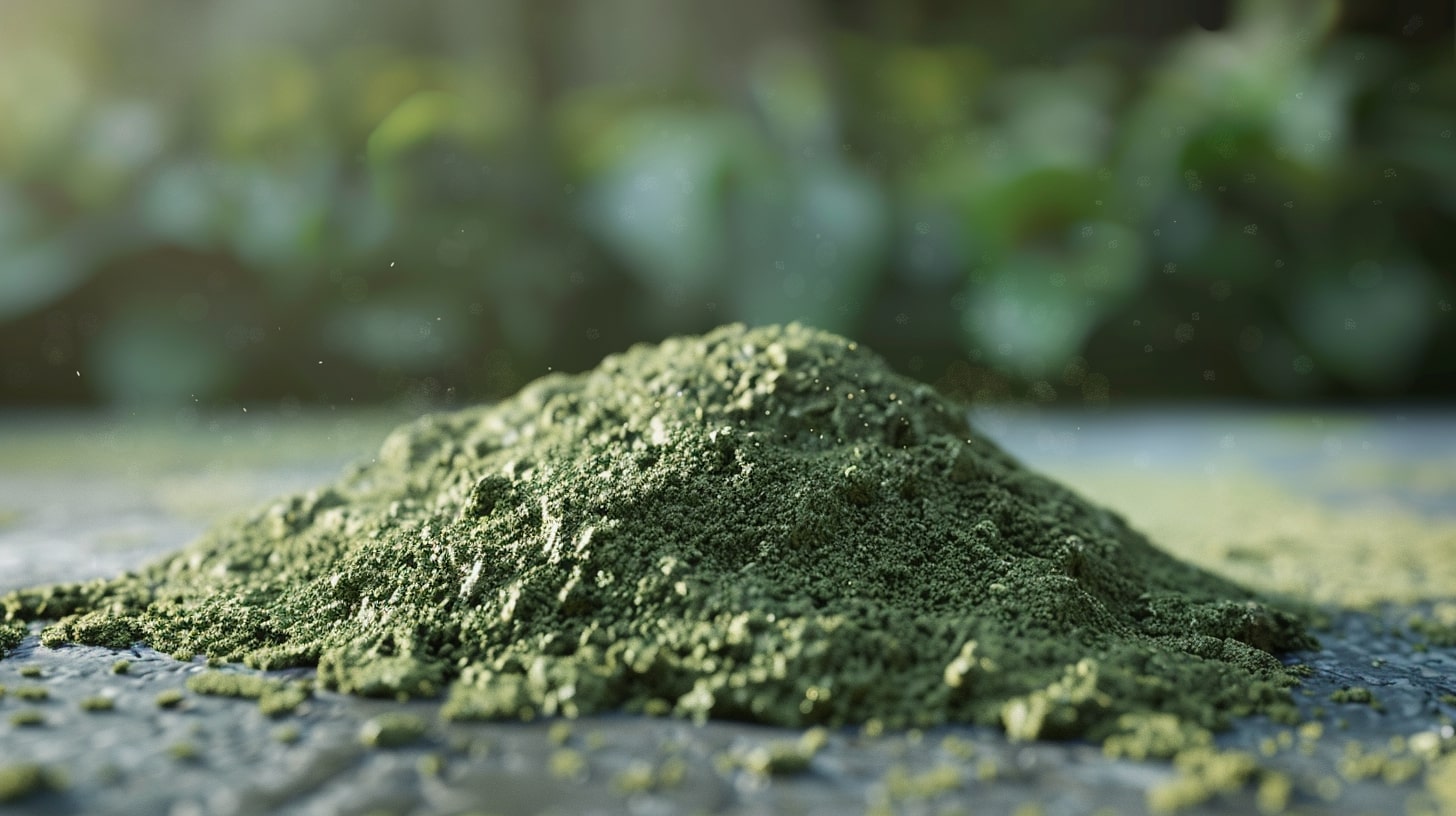Kratom Alkaloids: What You Need to Know


TL;DR: This guide explores the key alkaloids found in kratom leaves, including mitragynine and 7-hydroxymitragynine. While over 40 alkaloids have been identified, most are still not well understood. Alkaloid content can vary by strain, origin, and processing method. Scientific research on kratom alkaloid effects is still developing, so any conclusions should be viewed as preliminary. Lab testing can offer insight into a product’s alkaloid profile, but industry standards remain inconsistent.
Disclaimer: This article is for informational purposes only and does not promote or endorse kratom use. Kratom is not FDA-approved, and its legal status varies by location. Always consult a healthcare professional before purchasing or using kratom products.
If you’ve ever taken a closer look at kratom, you’ve probably come across terms like mitragynine, 7-hydroxymitragynine, or even “full-spectrum kratom.” These refer to kratom alkaloids - the natural compounds found in the leaves of the Mitragyna speciosa tree.
But what exactly are alkaloids? How do they vary from one strain to another? And why are they so important when it comes to understanding kratom?
In this guide, we’ll explore:
- What alkaloids are and their role in kratom
- he most well-known alkaloids in kratom and what they do
- How kratom alkaloid content varies by strain and environment
- Why research into advanced kratom alkaloids is still evolving
Let’s dig in.
Key Takeaways
- Kratom leaves contain over 40 known alkaloids, each with unique properties and biological interactions.
- The most studied alkaloids - mitragynine and 7-hydroxymitragynine - are believed to play a key role in kratom’s effects.
- Alkaloid levels can vary depending on strain, harvest time, drying method, and region.
- While research into kratom alkaloids effects is growing, many compounds remain poorly understood.
- Understanding alkaloid content can help consumers and researchers better interpret kratom’s variability and potential risks.
What Are Alkaloids?
Alkaloids are naturally occurring chemical compounds found in many plants. These compounds often contain nitrogen and can have physiological effects on humans and animals. You’ll find alkaloids in substances like coffee (caffeine), tobacco (nicotine), and cocoa (theobromine).
In kratom, these compounds are responsible for the plant’s complex interaction with the body. Some alkaloids in kratom are believed to interact with opioid receptors, while others may engage different neurotransmitter systems.

The Kratom Alkaloids List: The Most Studied Compounds
Kratom contains more than 40 distinct alkaloids, but here are the ones most frequently studied:
1. Mitragynine
- The most abundant alkaloid in kratom, making up around 60–70% of total alkaloid content.
- Believed to interact with opioid receptors and is often associated with stimulant or mood-altering properties depending on the amount and individual sensitivity.
2. 7-Hydroxymitragynine
- Present in smaller quantities (typically less than 2%).
- Considered more potent than mitragynine in some animal studies, though its exact function in humans is still under investigation.
3. Speciogynine
- A lesser-known alkaloid that may contribute to the overall alkaloid profile.
- Not well-studied, but it's part of the full-spectrum kratom alkaloids list.
4. Paynantheine
- Accounts for approximately 10–12% of kratom's alkaloid makeup.
- Thought to have mild muscle-relaxant properties, though clinical data is very limited.
5. Speciociliatine
Structurally similar to mitragynine and believed to contribute to kratom’s overall alkaloid synergy.
Did You Know?
Even though mitragynine and 7-hydroxymitragynine get most of the attention, it's the synergy between multiple alkaloids that gives each kratom strain its unique character.
Advanced Kratom Alkaloids: The Lesser-Known Compounds
Beyond the big names, kratom contains dozens of minor alkaloids that are still being studied. These include:
- Ajmalicine (also found in Rauwolfia plants)
- Isomitraphylline
- Corynantheidine
- Epicatechin (also found in green tea and cocoa)
While research into these advanced kratom alkaloids is ongoing, it’s currently unclear how they affect the body on their own or in combination with more prominent compounds.
Keep in Mind
Advanced alkaloids may play supporting roles in kratom’s overall profile, but more research is needed to determine their individual effects.
What Affects Kratom Alkaloid Content?
Kratom isn’t a one-size-fits-all plant. The alkaloid content in kratom products can vary based on several factors, including:
- Strain and vein color (e.g., red, green, white)
- Geographic origin (e.g., Bali, Borneo, Maeng Da)
- Harvest time (younger vs. mature leaves)
- Drying and fermentation processes
- Storage conditions after harvest
This variability is why two kratom products labeled the same may still have different alkaloid profiles.

Kratom Alkaloids Effects: What We Know (and Don’t)
While some alkaloids have been studied in lab settings (mostly in animals), there is still a lack of peer-reviewed human research on the full spectrum of kratom alkaloids effects.
Here’s what we currently know:
- Mitragynine may act as a partial opioid receptor agonist.
- 7-Hydroxymitragynine shows higher potency in lab tests but appears in much lower concentrations.
- Other alkaloids’ roles are largely unknown or inferred from plant relatives.
Important Note
Due to this limited research, any effects attributed to kratom alkaloids should be considered theoretical or anecdotal - not medical facts.
How Is Alkaloid Content Measured?
Some kratom products are tested in labs using methods like high-performance liquid chromatography (HPLC) or mass spectrometry (MS). These tests can reveal the percentage of mitragynine and sometimes 7-hydroxymitragynine.
However, not all vendors provide these results, and standards for testing and labeling are not consistent across the industry.
When available, look for:
- Third-party lab testing
- Certificates of Analysis (COA)
- Batch numbers and traceable sourcing
FAQs About Kratom Alkaloids
Q: How many alkaloids are in kratom?
A: Kratom contains over 40 known alkaloids. Among those 40 alkaloids, mitragynine and 7-hydroxymitragynine are the most studied.
Q: What’s the strongest alkaloid in kratom?
A: 7-hydroxymitragynine is believed to be the most potent, but it’s present in small amounts.
Q: Do different strains have different alkaloid profiles?
A: Yes. Strain, region, and drying method can all influence alkaloid composition.
Q: Is there a standard kratom alkaloids list?
A: While there’s no official standard, research has identified a consistent group of key alkaloids across most strains.
Kratom Alkaloids: Final Thoughts
Knowing what kratom alkaloid content is about is absolutely necessary if you want to dive deeper into what makes each kratom strain unique. While mitragynine and 7-hydroxymitragynine often get the spotlight, dozens of other compounds - some still being studied - contribute to the plant’s complexity.
As interest in kratom continues to grow, so does the need for credible, peer-reviewed research on how these alkaloids interact and affect the body. Until then, any claims about kratom’s effects should be approached with caution and a commitment to staying informed.
Disclaimer: This article is for informational purposes only and does not provide medical advice. Always consult a qualified healthcare provider and review your local laws before considering kratom for any purpose.
Sources:
Buy once from Authentic Kratom® and you will be a customer for life!
It all started in 2013. On a mission to push boundaries, ease ailments, and hit the brakes on mediocre kratom brands, we wanted to be the change we wanted to see in the kratom industry. Nestled in San Fernando Valley, we are a pure kratom distributor tasked with putting mouth-watering blends at your fingertips, bridging the gap between Indonesia’s most sought-after kratom and the rest of the globe.


